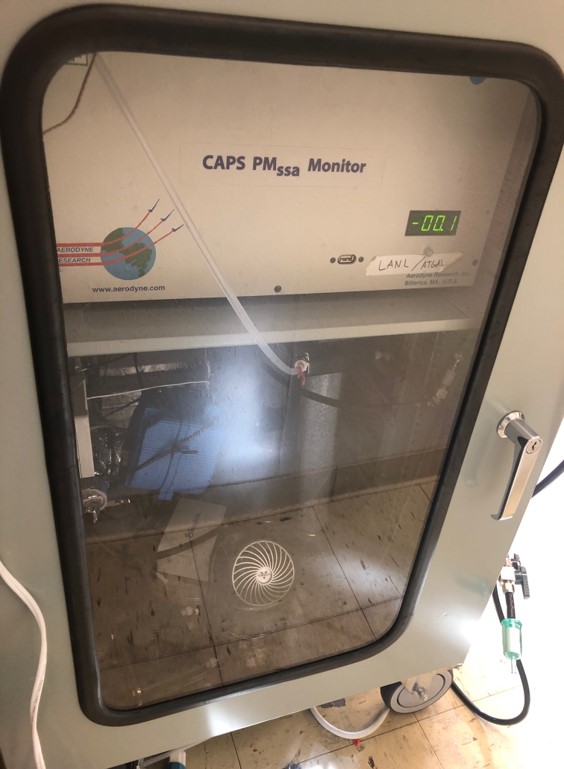
Probing wet fire smoke in clouds: Can water intensify the Earth’s warming?
A first-of-its-kind instrument that samples smoke from megafires and scans humidity will help researchers better understand the scale and long-term impact of fires—specifically how far and high the smoke will travel, when and where it will rain, and whether the wet smoke will warm the climate by absorbing sunlight.
A paper published online in March 2021 by the journal Aerosol Science and Technology describes the design, data analysis, and validation of the instrument.
Funding for the instrument, laboratory evaluation, and testing primarily came from the U.S. Department of Energy’s (DOE) Atmospheric System Research (ASR) and the Laboratory Directed Research and Development program at Los Alamos National Laboratory (LANL) in New Mexico.
The instrument will be used as part of the DOE Atmospheric Radiation Measurement (ARM) user facility’s upcoming TRacking Aerosol Convection interactions ExpeRiment (TRACER).
“Smoke containing soot and other toxic particles from megafires can travel thousands of kilometers at high altitudes where winds are fast and air is dry,” said co-author Manvendra Dubey, an atmospheric scientist at LANL. “These smoke-filled clouds can absorb much more sunlight than dry soot—but this effect on light absorption has been difficult to measure because laser-based techniques heat the particles and evaporate the water, which corrupts observations.”
The new instrument circumvents this problem by developing a gentler technique that uses a low-power, light-emitting diode to measure water’s effect on scattering and absorption by wildfire smoke and hence its growth. By sampling the smoke and scanning the humidity from dry to very humid conditions while measuring its optical properties, the instrument mimics what happens during cloud and rain formation, and the effects of water are measured immediately.
Laboratory experiments showed for the first time that water coating the black soot-like material can enhance the light absorption by up to 20%.
Next Steps

The instrument will next be tested and the water effects probed in smoke from wildfires sampled at LANL’s Center for Aerosol-gas Forensics (CAFÉ).
LANL will deploy this instrument and others to the Houston, Texas, area next year as part of the TRACER field campaign. The lab’s effort, called TRACER-CAT-LANL for short (CAT stands for Carbonaceous Aerosol Thrust), will measure how water uptake by soot interacts with deep convective storms.
Leading TRACER-CAT-LANL is aerosol scientist Allison C. Aiken, the chair of ARM’s User Executive Committee. Aiken is a co-author of the Aerosol Science and Technology paper. Dubey, a co-investigator on TRACER-CAT-LANL, and Christian M. Carrico of the New Mexico Institute of Mining and Technology are the paper’s corresponding authors.
The group of authors also includes scientists from Michigan Technological University and Aerodyne Research Inc. Four of the authors received support through training programs sponsored by the DOE Office of Science’s Office of Workforce Development for Teachers and Scientists.
For more information, read the ARM/ASR research highlight on this paper.
The Santa Fe New Mexican also published an article describing this research. Read the article.
# # #This work was supported by the U.S. Department of Energy’s Office of Science, through the Biological and Environmental Research program as part of the Atmospheric System Research program.

